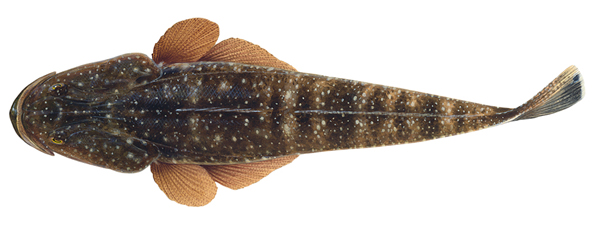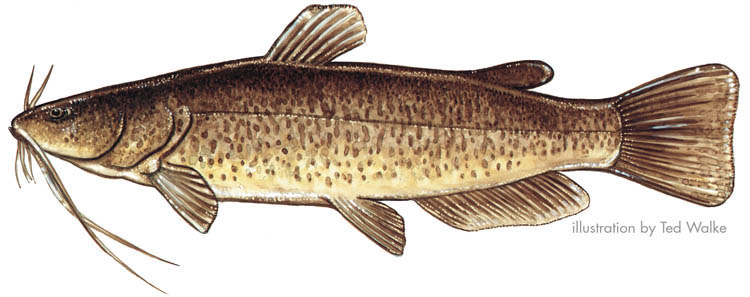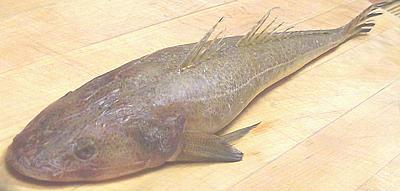
Platycephalus indicus
FAMILY
Platycephalidae
TAXONOMY
Platycephalus indicus Linneaus, 1758, Asia.
OTHER COMMON NAMES
English: Bartail flathead; French: Platycйphale des Indes; Spanish:
Chato нndico; Japanese: Kochi.
PHYSICAL CHARACTERISTICS
Grows to 39.4 in (100 cm) in maximum length. Characteristic
flattened head with various spinous ridges. Vomerine and
palatine teeth are canine-like, with broad bands of villiform
teeth in jaws. The two dorsal fins are well separated, with an
isolated short spine before the first dorsal fin. Body covered
with small ctenoid scales. Brownish coloration with eight or
nine obscure dusky bands over the back. All fins, except the
caudal fin, are covered with dusky spots on the rays. Caudal
fin has a median longitudinal black band below and two
oblique bands above.
DISTRIBUTION
Known from Israel and Egypt (entered the Mediterranean
through the Suez Canal), eastern Africa, India, Indonesia,
China, southern Japan, the Philippines, and Western Australia.
HABITAT
Typically found on rocky and soft bottoms at depths from 33
to 656 ft (10 to 200 m).
BEHAVIOR
A bottom-dwelling fish that spends most of its time buried beneath
the sand or among rocks waiting to ambush its next prey.
FEEDING ECOLOGY AND DIET
Feeds primarily on benthic crustaceans and small fishes.
REPRODUCTIVE BIOLOGY
Little is known about the
REPRODUCTIVE BIOLOGY
of the Indian
flathead.
CONSERVATION STATUS
Not listed by the IUCN.
SIGNIFICANCE TO HUMANS
Occasionally harvested, but not a fish of great commercial importance.
Photo Gallery of - Indian flathead fish





 Animalia Life
Animalia Life